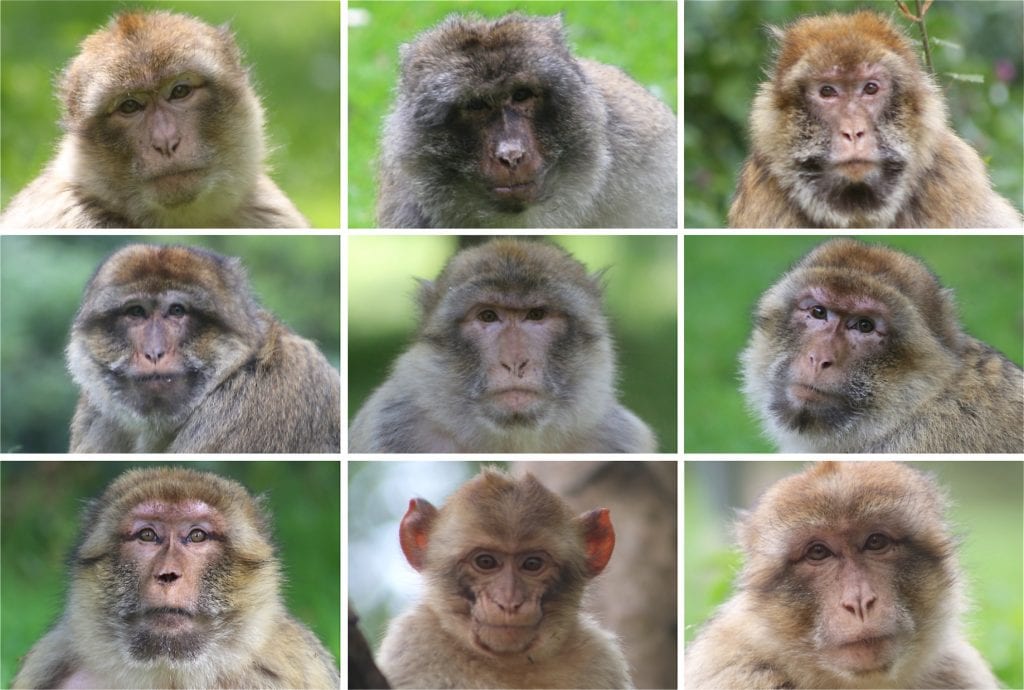This entry was originally published on the Yale MacMillan Center’s website. You can view that post here.

Do you think you could recognize 140 of your closest friends? What about 140 strangers? This was the challenge I faced when I began my summer research at the Trentham Monkey Forest, in Stoke-on-Trent, England thanks to a generous Pre-Dissertation Fellowship from the MacMillan Center. Trentham Monkey Forest is a park that’s home to 140 Barbary macaques. Before, I was able to begin my data collection, I had to learn the face of every monkey resident.
During the six-week data collection trip, my goal was to test how monkeys think about their social world. While this type of research, called ‘comparative cognition’ can help inform our understanding about how animals navigate all sorts of situations, it can also improve our understanding of human cognition. Specifically, studying primates can help us make inferences how human cognition evolved. It is impossible to go back and time and see what our last common ancestor could think about, by studying some of our closest living relatives, we can infer what sorts of evolutionary pressures might be required in order for certain cognitive abilities to emerge.
My specific project investigated what Barbary monkeys know about what others can see. As humans, we are able to track other people’s perspectives and even take into consideration what someone might know about someone else’s perspective. We know what others see, know, and feel, and are pretty good at making predictions about how other people will act based on this information. This ability is what psychologists refer to as ‘theory of mind’ and was long believed to be human unique.

How do you ask a monkey what it knows about what someone else knows? For nonverbal subjects like animals, and also nonhuman infants, we use a measure known as looking-time, or the amount of time the subject looks at the experimental setup. Traditionally, we use this measure to evaluate the subject monkey’s surprise. Like humans, monkeys look much longer when they are surprised at the outcome of a situation. We can compare looking time between different conditions to determine whether monkeys are surprised in the same way as humans. This method has been used in a variety of nonverbal populations, including human infants, as well as a variety of primate and other nonhuman animal species. In my task in particular, I was wondering whether monkeys could make the same predictions as humans about how other people should act based on their visual perspective.

In short, for my research I show monkeys magic tricks. At Trentham Monkey Forest, I walked around the park looking for calmly-sitting monkeys that we could test on our experiment. Once located, we approached the monkey and sat about a meter away. The test required two experimenters: one person who presented the experiment, and a second who filmed the monkey’s reaction. Later, someone blind to the experimental hypothesis and the conditions of each video watches the videos back and records when the monkey is attending to the apparatus.
To date, much of the comparative cognitive research has been carried out on only a few select species. Barbary macaques are relatively understudied compared to some of their closest primate relatives, such as the Rhesus macaque. Barbary macaques are genetically very close to Rhesus macaques, but are near opposite in their social behavior. While Barbary macaques are tolerant and friendly, the Rhesus macaque is notorious for being one of the more aggressive and despotic primates. By studying development in both species, we can begin to tease apart how a species’ ecology shapes their cognition. I hope to pursue this type of research for the duration of my graduate career.

This summer was an incredible learning experience. I am so grateful for the generosity of the MacMillan Center for the Pre-Dissertation Fellowship funding that I received that allowed me to pursue this project, the staff at the Trentham Monkey Forest for allowing me to collect data there, and my two advisers and mentors on this project, Dr. Laurie Santos and Dr. Alexandra Rosati. While we are still working on analyzing the data, perhaps my biggest success was that in time, and much to my own surprise, I learned all 140 monkey faces.
—
Written by Alyssa Arre, a Class of 2022 graduate student. If you want to keep up with the rest of her research, or are interested in comparative cognition and her field work more generally, you can follow along with her blog, Dispatches from the Field (campuspress.yale.edu/alyssaarre), or visit her website at alyssaarre.com.